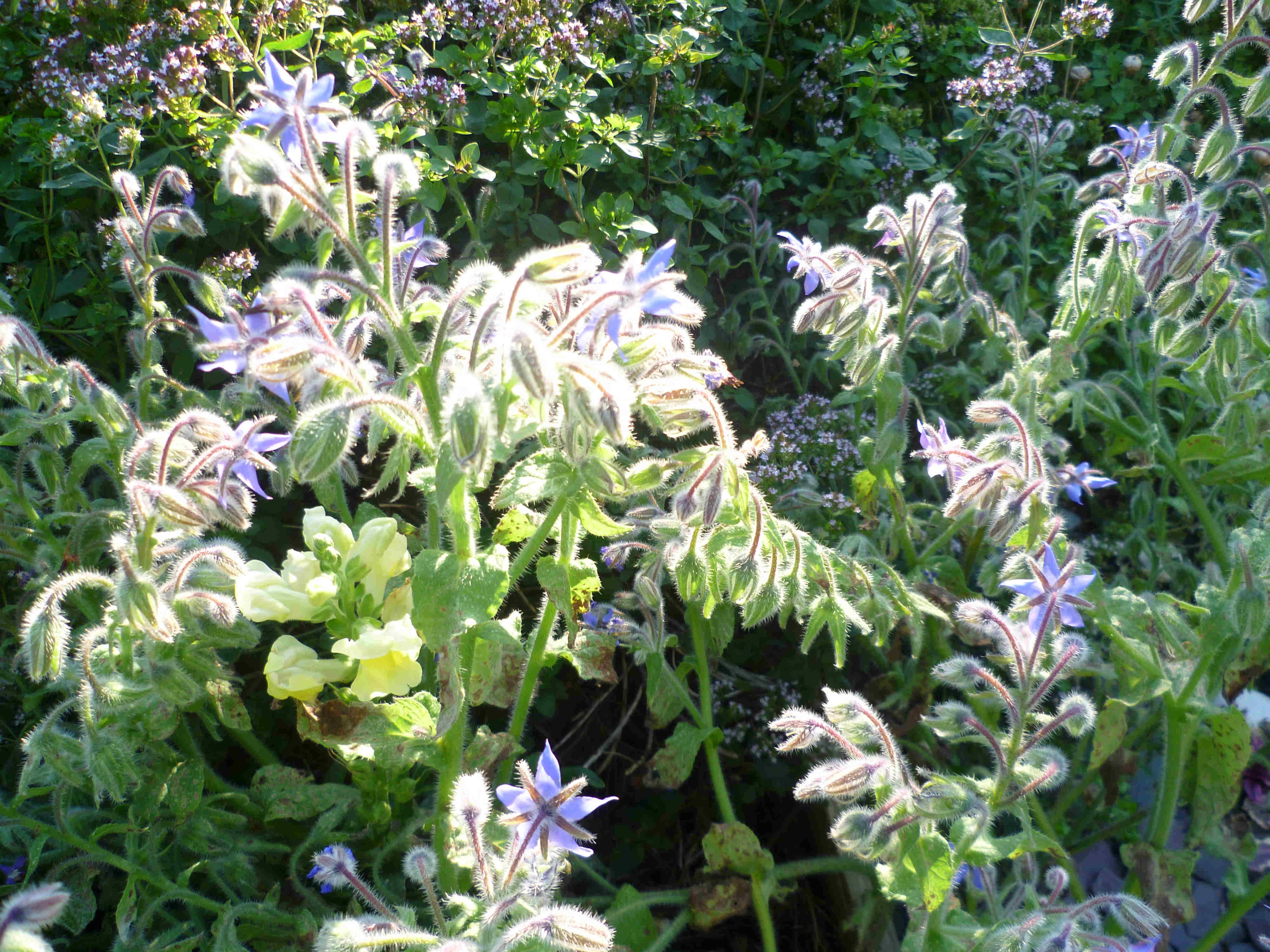A picture post today. These photos were taken on 5th December this year in the front garden.
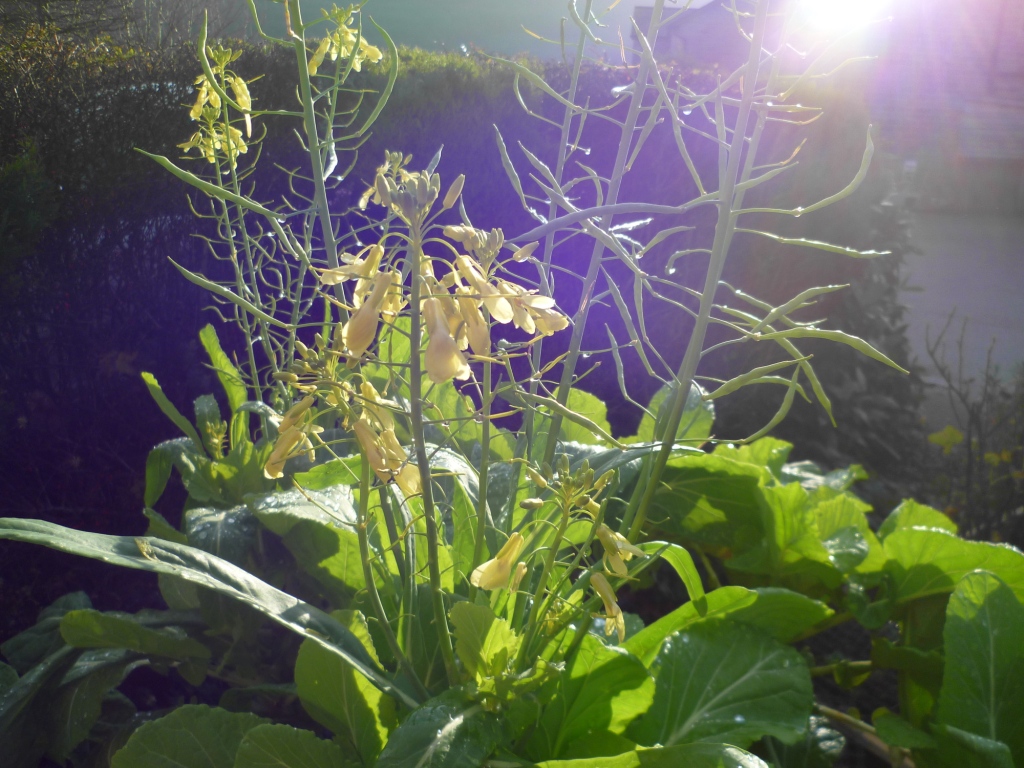
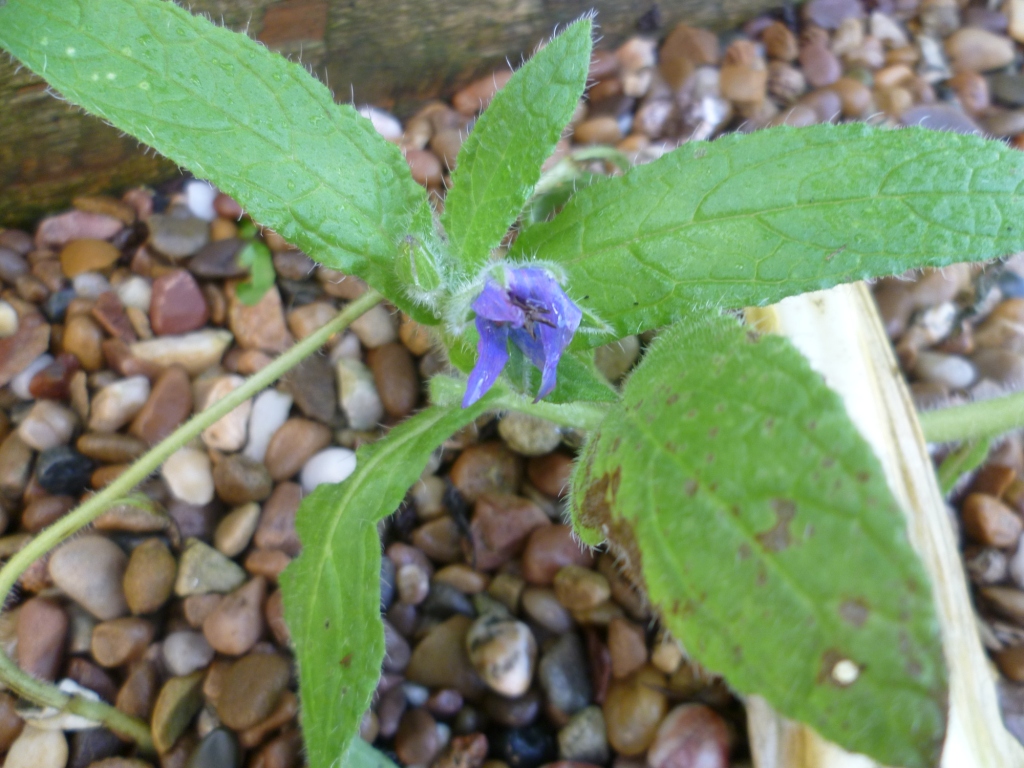
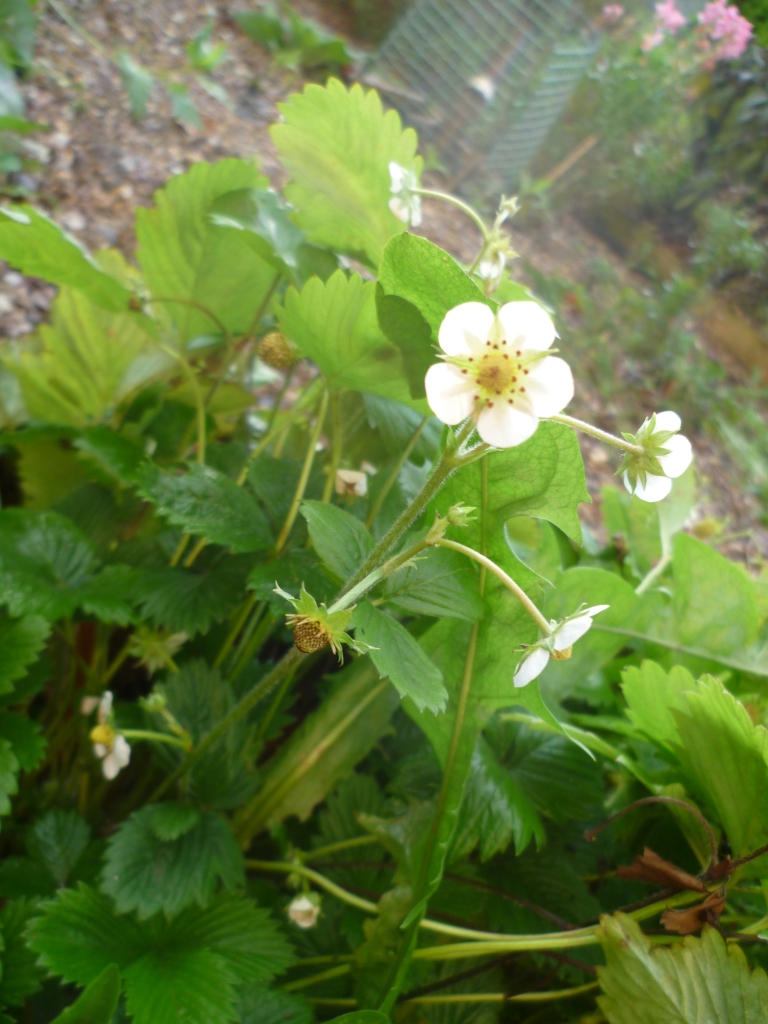


And finally, some annual leeks that have ‘naturalised’ in the middle of the Golden Oregano.
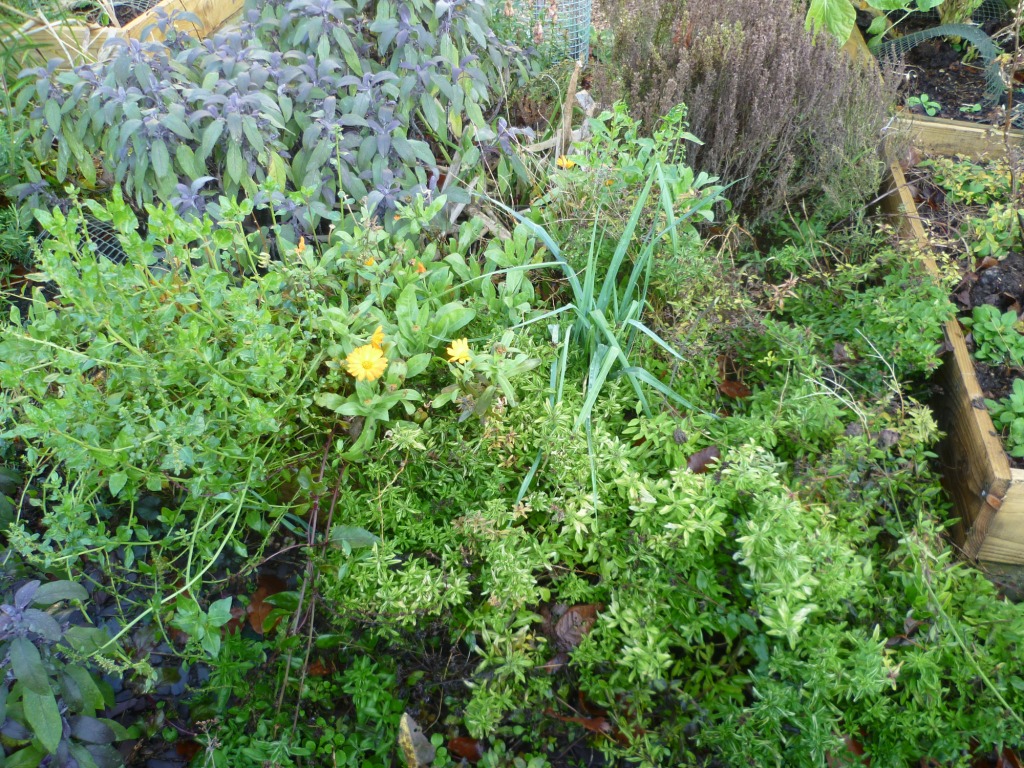
A picture post today. These photos were taken on 5th December this year in the front garden.





And finally, some annual leeks that have ‘naturalised’ in the middle of the Golden Oregano.

As you’ll know if you’ve been reading this blog, I’ve been following Forest Garden Wales’ course on designing a backyard forest garden. The latest section that I’ve been working through looks at protection – for example, from wind, cold, and predators. Jake, who takes an ecosystems view, points out that this includes protecting the wildlife that are interdependent with the garden. A simple log pile and a bee house are now on my wish list.
Our plot is already well sheltered from wind by natural hedgerows and trees. During a recent cold snap, I protected the beds using the simple expedient of draping horticultural fleece loosely over the top. I’m delighted that underneath this blanket, seedlings have germinated and are now standing proudly in their rows.
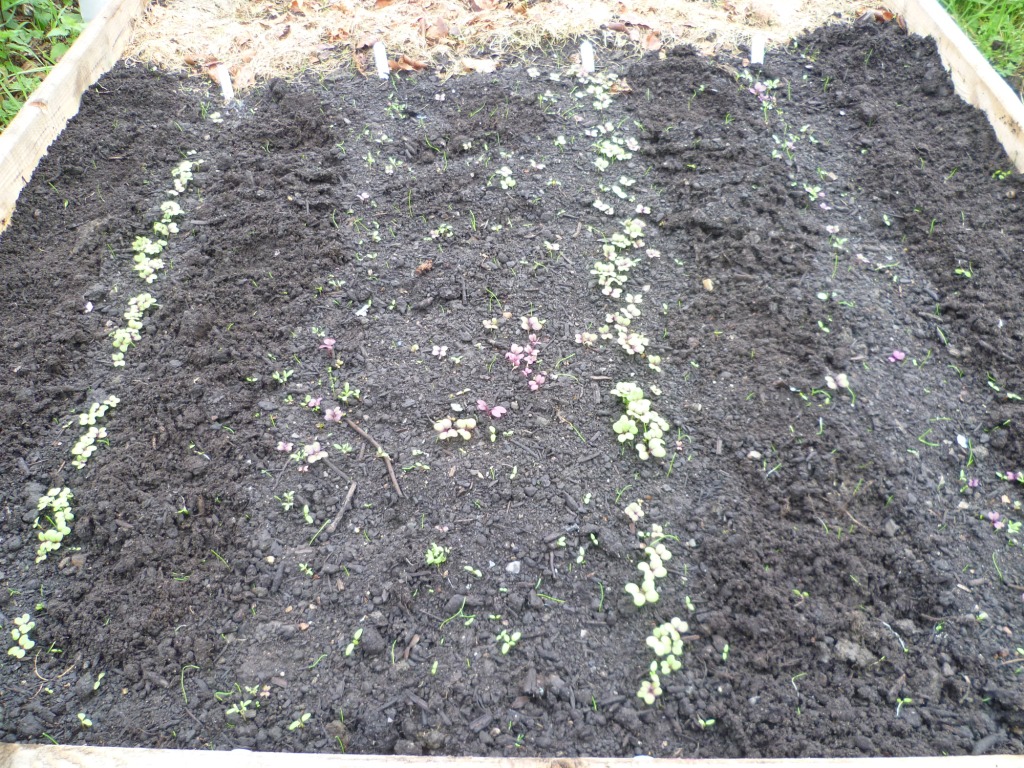
Thinking about protection from predators, I had already spotted a squirrel digging in someone else’s raised beds, and I took the precaution of protecting the young pignut plant with a couple of pieces of firm mesh (not netting, as wildlife get tangled up in it).
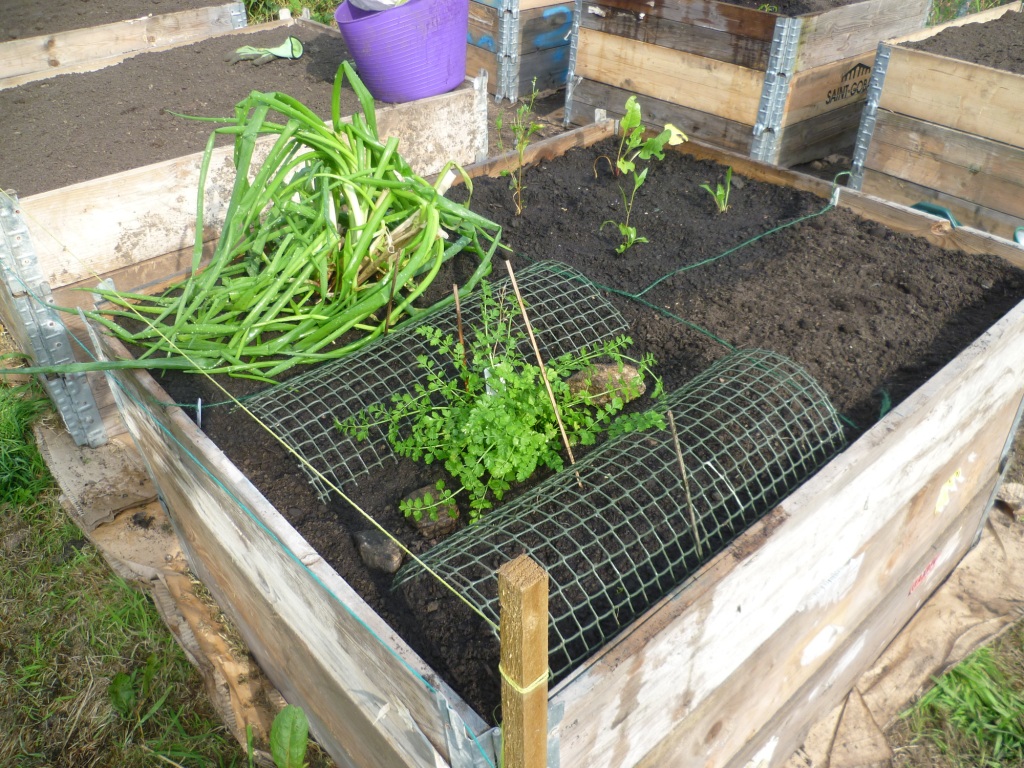
Then last week, when we went to visit the plot, we saw this:

Pretty substantial digging.

What immediately sprang to mind was

If it is indeed badgers who did the digging, do they like root crops? Of course they do, says Google. I did a bit more research, and read about chain link fences sunk several feet into the ground, before I remembered that there is no point getting into a fight. I love wildlife, and if we have badgers, then that is a privilege and the plot needs to be designed with them in mind. As Anni Kelsey says in her beautiful book The Garden of Equal Delights, it is time that we learned to welcome the wild into our gardens. If we give up persecuting, fighting and controlling them, they become welcome participants in our forest garden system, playing useful roles that we might not immediately recognise. So instead of fighting them, I’m going to learn as much as I can about them.
An immediate piece of useful advice came from an allotment forum, where one grower suggested planting onions with root crops to mask the smell. So a very simple change that I can make to my plans is to grow the onion crops around the edges, and put the roots in the centre. I’ll give this a go, and if we end up with badgers rootling through our boxes, then I’ll just grow greens on the plot and roots in the garden. Either way, the badgers are welcome. They are doing a pretty good job of digging up the bindweed and couch grass roots for a start. This may help me to establish more diverse vegetation in my meadow-paths. So, on the whole, I’m rooting for them.
As soon as I knew I may be having an allotment plot, I started to dream about what I would grow there. Initially, prompted by fears of food shortages during the COVID19 lockdown, I planned to grow potatoes and onions. I looked up growing instructions and spacing requirements, and found that with six one metre raised beds, I couldn’t grow many of them. Maybe enough for a week’s worth of meals. So I started to think differently, and instead decided to use the plot to continue my experimentation with growing perennial food crops which are also good for wildlife. Jake’s Forest Gardening course and the allotment both entered my life in the same week, which was a clear shove in that direction. Jake sums up the forest garden design philosophy as ‘growing edible crops with nature’, which is certainly singing my song.
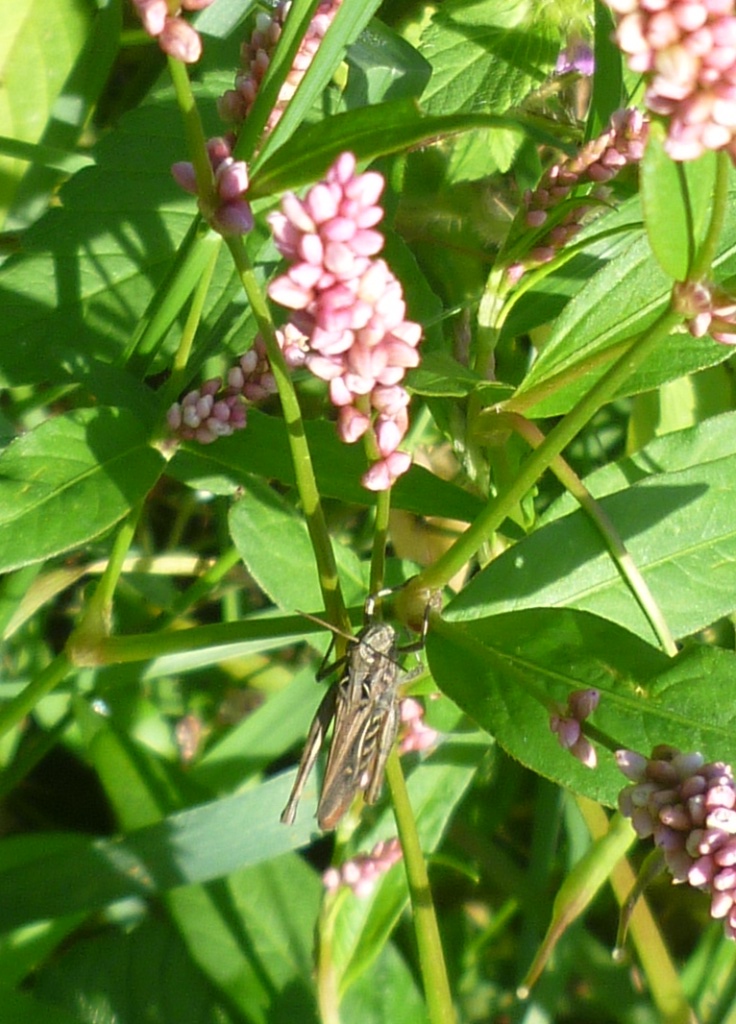
With that in mind, here is my wish list of plants. A key question that I’ve considered in selecting these is ‘what does the plot give me that my garden doesn’t’? Another is ‘what is their role in the local ecosystem?’
Broad beans – because I like them, and don’t have room for them in my garden. They are good for the soil, as they fix nitrogen in their roots, and the tops will add biomass when they have finished cropping. The flowers are good for nectar, and smell good too (remember those sewerage works). I’ve chosen ‘The Sutton’ dwarf variety as it is smaller and more suitable for the boxes.
Oca – this is something of an experiment, given that it isn’t frost hardy. I don’t yet know how sheltered the plot will be in winter. I want to try it because it provides a blight free carbohydrate, it is something new to eat and can’t be bought in the shops. It also provides ground cover. It is my alternative to growing potatoes. It will need protection from frost.
Skirret – or wild carrot. This will provide flowers for insects, and carbohydrate from the sugary root. It is a native wild plant. It will benefit from the deep beds of loose, friable soil, and from the aspect in full sun.
Bunching onion – a companion for the skirret. I plan to grow it as a perennial, harvesting only the tops. It will provide us with a spring onion replacement.
Scorzonera – another root to try, and definitely an experiment.

Blackcurrant – I want to see if this will grow better in a deep bed in full sun. I have one in my garden which doesn’t thrive, but it is in shallow soil and part-shade. I love big juicy blackcurrants! Insects seem to like the flowers too.
Strawberries – to provide ground cover for the blackcurrant, and another plant that doesn’t do well in my garden.

Pignut – a native wildplant which may provide tubers for us (if I can find them) and flowers for insects. You can also eat the foliage, and it provides ground cover.
Welsh Onion – flowers are good for insects, companion for Pignut, there wasn’t room for them in my garden where I have multiple clumps, and I want to try harvesting the bulbs.
Sea beet – this doesn’t grow leafy in my garden, so I’d like to see if it grows better in the plot. It grows tall and will cast shade so I’ve put it at the back of the bed.
Garlic – which I will grow for the greens, rather than the bulbs. Another experiment.
Other roots on my list are chervil root, hamberg parsley, and plain old parsnip. These would be grown annually.

I also have a wish list for companion plants for wildlife, to be grown in pots or encouraged into the ground. I already have (I think) polygonum persicaria (Redshank), horse radish, chamomile and borage. I’ll add more chamomile and borage to encourage them to proliferate (as if they need encouragement). Other plants to grow include calendula, nasturtium (which can tumble down the sides of the boxes), sweet peas (which can grow up them), wild thyme (which can scramble around their feet), and foxglove.
That concludes my wish list. This may need some refinement, given the evidence that I’ve seen recently of a wild visitor to the plot who may uproot my plans. All will be revealed in my next post.
I’ve been working through the design section of the forest gardening course that I’m following with Forest Garden Wales. In this post, I’ll reflect on the design decisions that I’ve been making as I’ve developed the allotment plot.
One of the first questions that I asked myself was, what did I want to use the plot for? I already have a garden which I’ve been writing about on this blog. What does the plot offer that is different? First, it is further from the house, so not instantly accessible. I can’t pop out and snip a herb or two at mealtimes. So the plot needs to grow things that I can manage and harvest less frequently. This rules out things that need a lot of watering or daily harvesting. Second, it is in full sun with an almost ideal aspect and lots of light, unlike my garden. Third, the growing area is provided by deep raised beds with friable soil. This is perfect for root or tuber crops, which also lend themselves to infrequent harvest. My garden, which has low light and shallow soil mostly grows greens and herbs. What I don’t have is carbohydrate, or root crops. This gives me a focus for the plot.
Rather than growing mostly annual vegetables, I decided that I wanted to continue my experiment with perennial edibles, finding new crops that will suit the growing conditions in an increasingly unstable climate. I also want the space to be shared with wildlife, in the same way that my garden is. This has informed my plants ‘wish list’.
In terms of layout, the planning process was like one of those games where you shove squares around until they all fit in. I had a rectangular plot, 426cm by 452cm, in which I had to fit raised beds that were 100cm by 120cm. I drew various sketch plans to work out how to get the most growing space into the available area, whilst leaving room to access the beds and keep back the bramble and bindweed. I allowed for the room that plants take up when they overhang the edges. I have also allowed for wildflower plants to grow around the edges, and for flowers in pots. Here is my final sketch map:

And this is what it looks like now that it is built and filled:

The beds are orientated to make the most of the light, and to minimise plants casting shade on each other. Having said that, I do wonder whether there might be a need for some shade at times, and this might be a future consideration. In a plot of this size, trees are not an option, which does give me more flexibility to move things around later.
In my next post, I’ll share my plants ‘wish list’, the plants that I have decided to try growing in this space, and my reasons for choosing them.
I wrote recently about the course I am following from Forest Garden Wales. What I didn’t tell you was that I received an email on the day that I started the course from a local allotment group. I had contacted them during lockdown to ask for a growing space. The email told me that there was a small plot available, if I wanted it. It is ‘quite a project’ I was told.
It made me think about whether I could use the project as a kind of practical assignment to work through Jake’s course. Can I apply Forest Gardening principles to a tiny allotment plot? Here is the space as it looked when I saw it at the beginning of September this year.
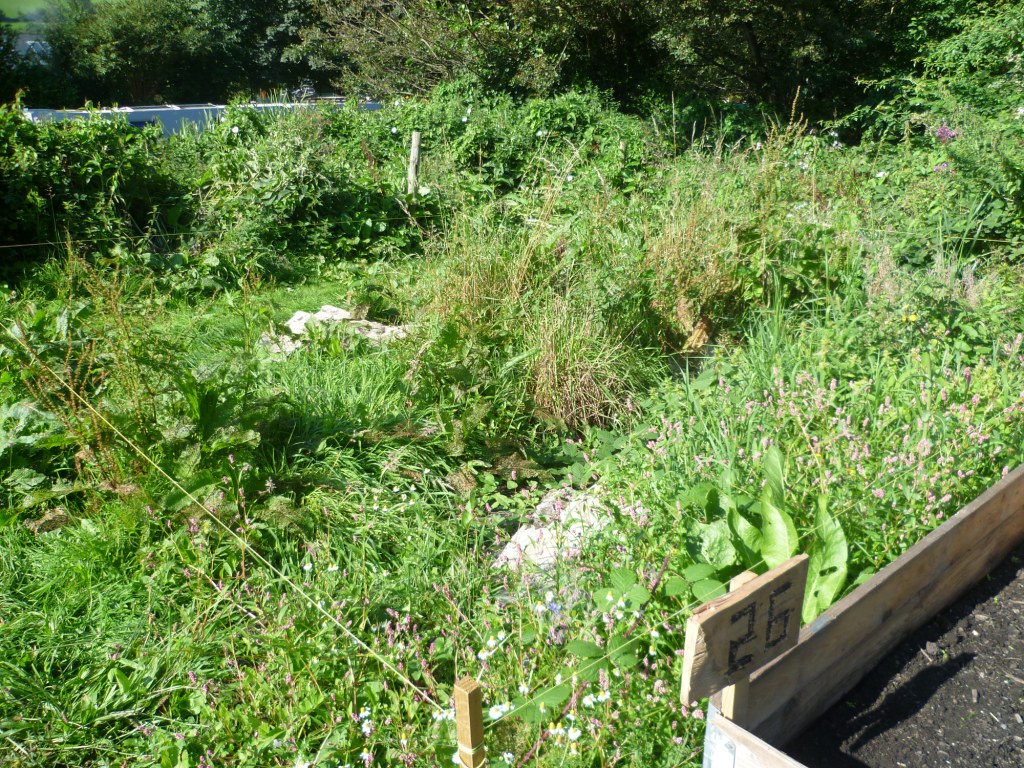
It is not a straighforward space. It is on the site of an old dump for canal dredging works, and the soil contains high levels of lead. It is therefore kept locked up underneath a membrane, which we must keep intact.

We need to create a growing space by building up, using high raised beds. The picture below shows how this has been done on our neighbouring plot.
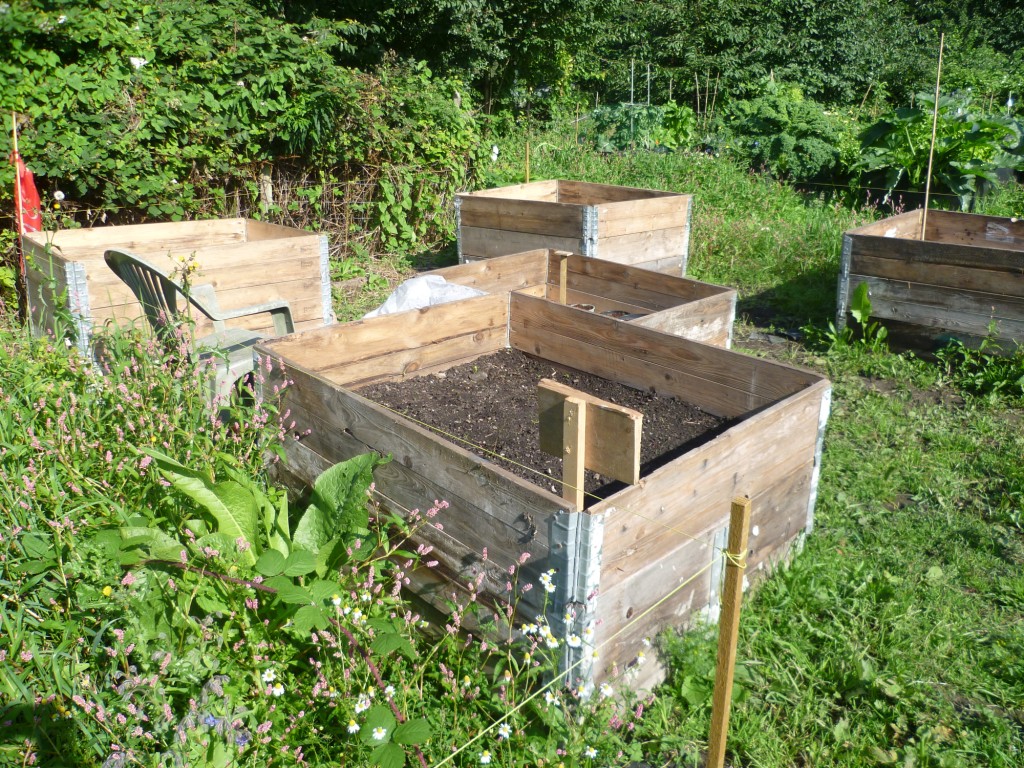
Talking of neighbours, on our first visit I met one of the residents:

It was clinging to a patch of wildflowers that I can’t bear to remove just yet …
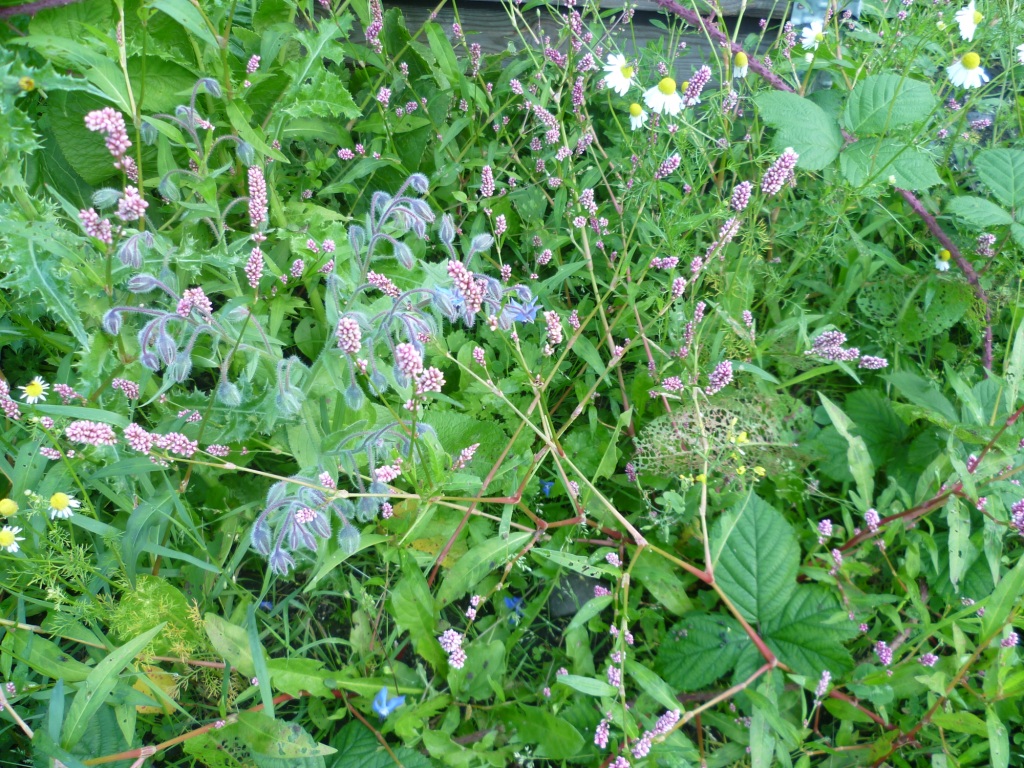
I have been working through the planning and observation section of Jake’s course, and for my next post I’ll share some of the observations that I’ve taken. His course is really easy to follow, and breaks things down into small, manageable chunks. He also makes some useful resources available, like a handy checklist for observations. He’s listed some very useful web resources too. I’m looking forward to sharing my observations, plotting and planning in future posts.
In the depths of this noticeably mild winter (I still have caterpillars on the brassicas), thoughts turn towards Spring. Mine do, at any rate. Looking back over the last year, one of the things that delights and intrigues me is my lawn’s ability to turn into a mini meadow. John Lewis-Stempel, in his wonderful book Meadowland, describes a lawn as a ‘meadow in captivity’. With our lawn, we are letting the meadow out. Our approach to lawn-mowing is inconsistent, to say the least. We (the royal ‘we’ – I don’t touch the lawnmower) mow about once a month on average, and sometimes less frequently. This has created space for a range of wildflowers to colonise our ‘lawn’, which consequently is usually busy with bees and other pollinators. Here are a few of these plants that I managed to photograph this year. OK, so the bulbs had help from me. But everything else moved in by itself. Any ideas what the tiny blue flower is?
A few musings as promised on the lack of Autumn ‘tidying’ (following Anni’s post). In theory, I should be chopping down all these seed heads …
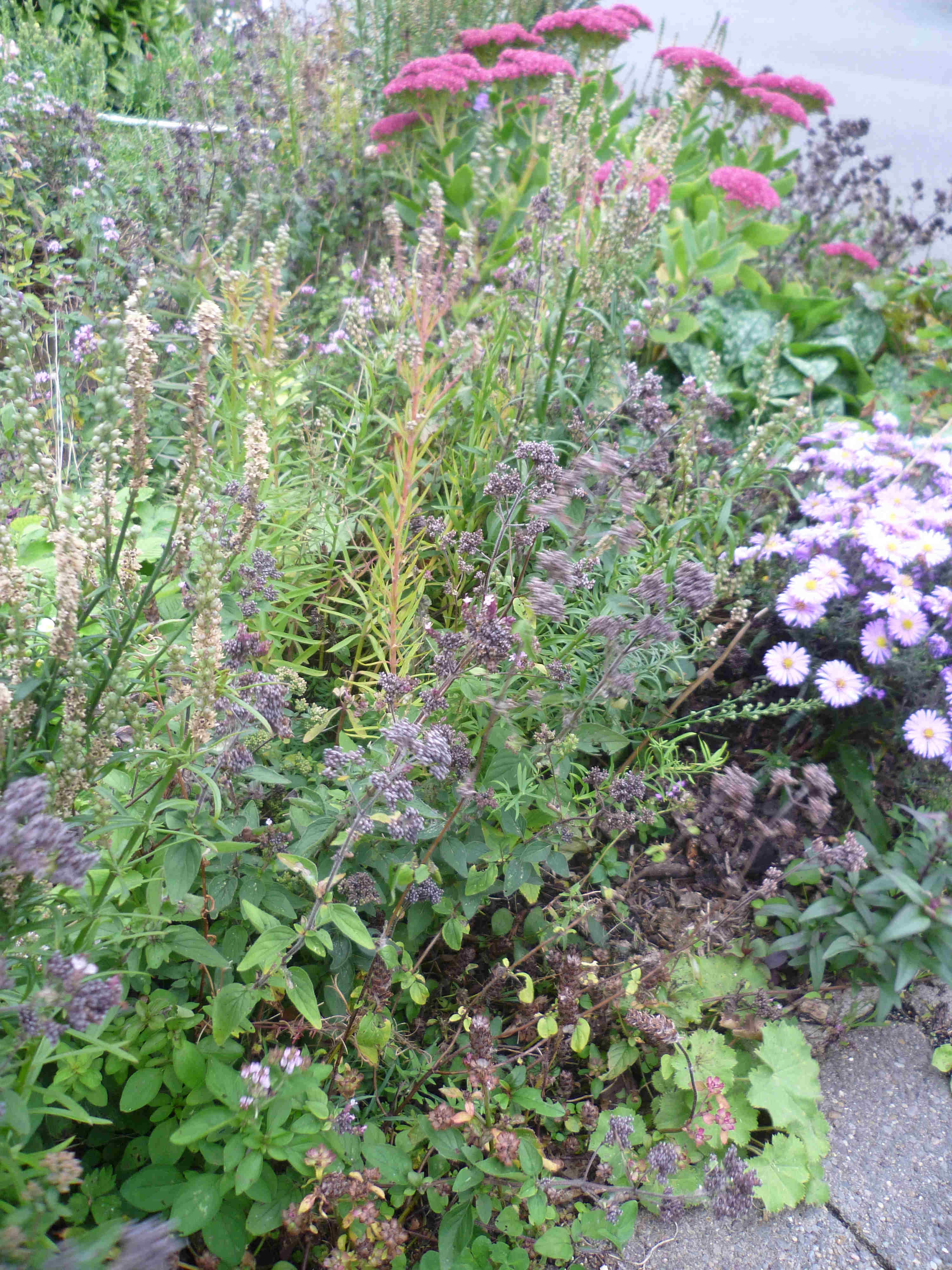
A corner of my front border
But looking at these more closely, I observe tiny cave-like dwellings in the marjoram …
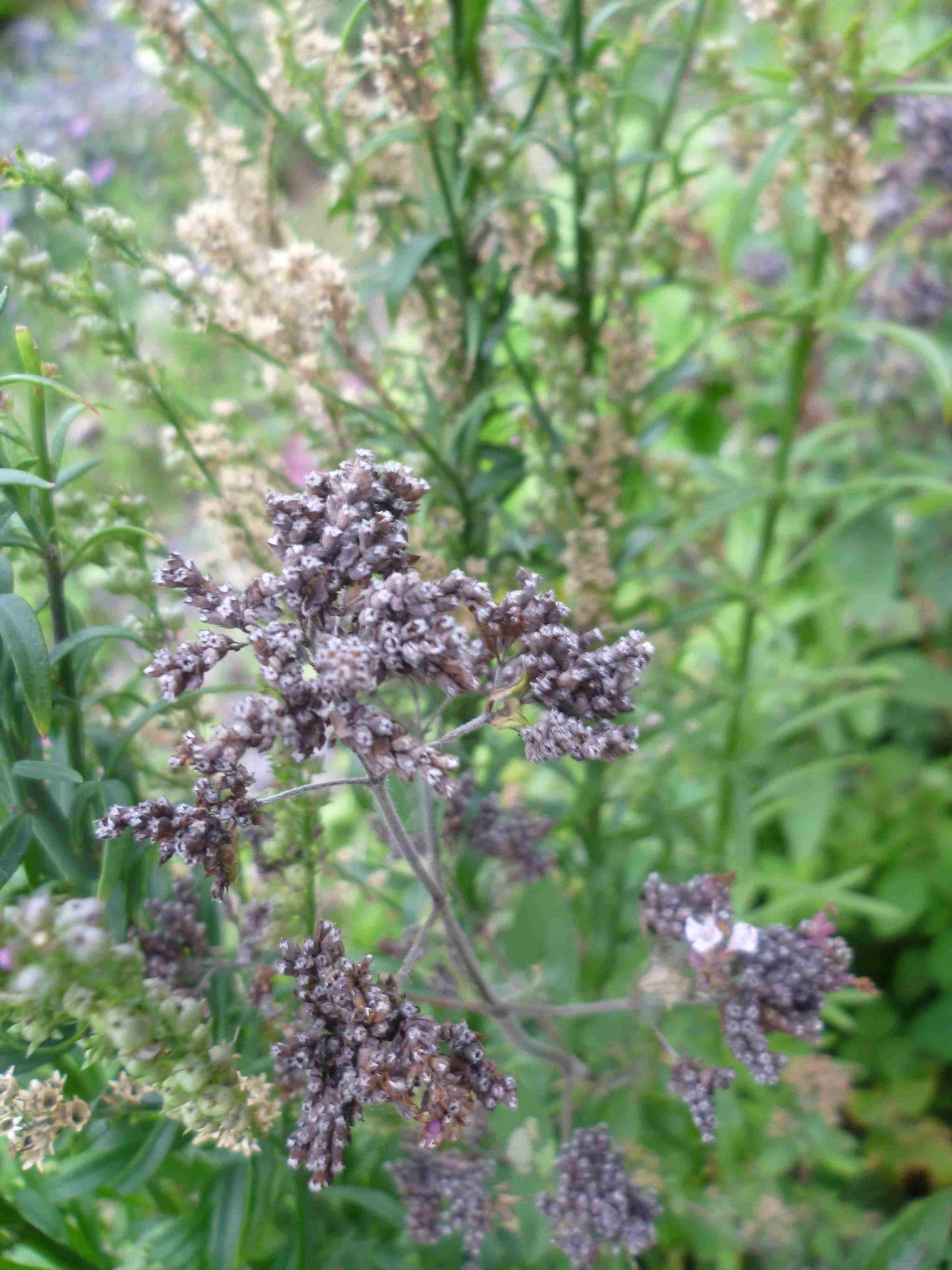
pot marjoram seed heads
And lurking inside those untidy purple toadflax seedheads are nutritious black seeds, which could be a perfect snack for something on a cold day …
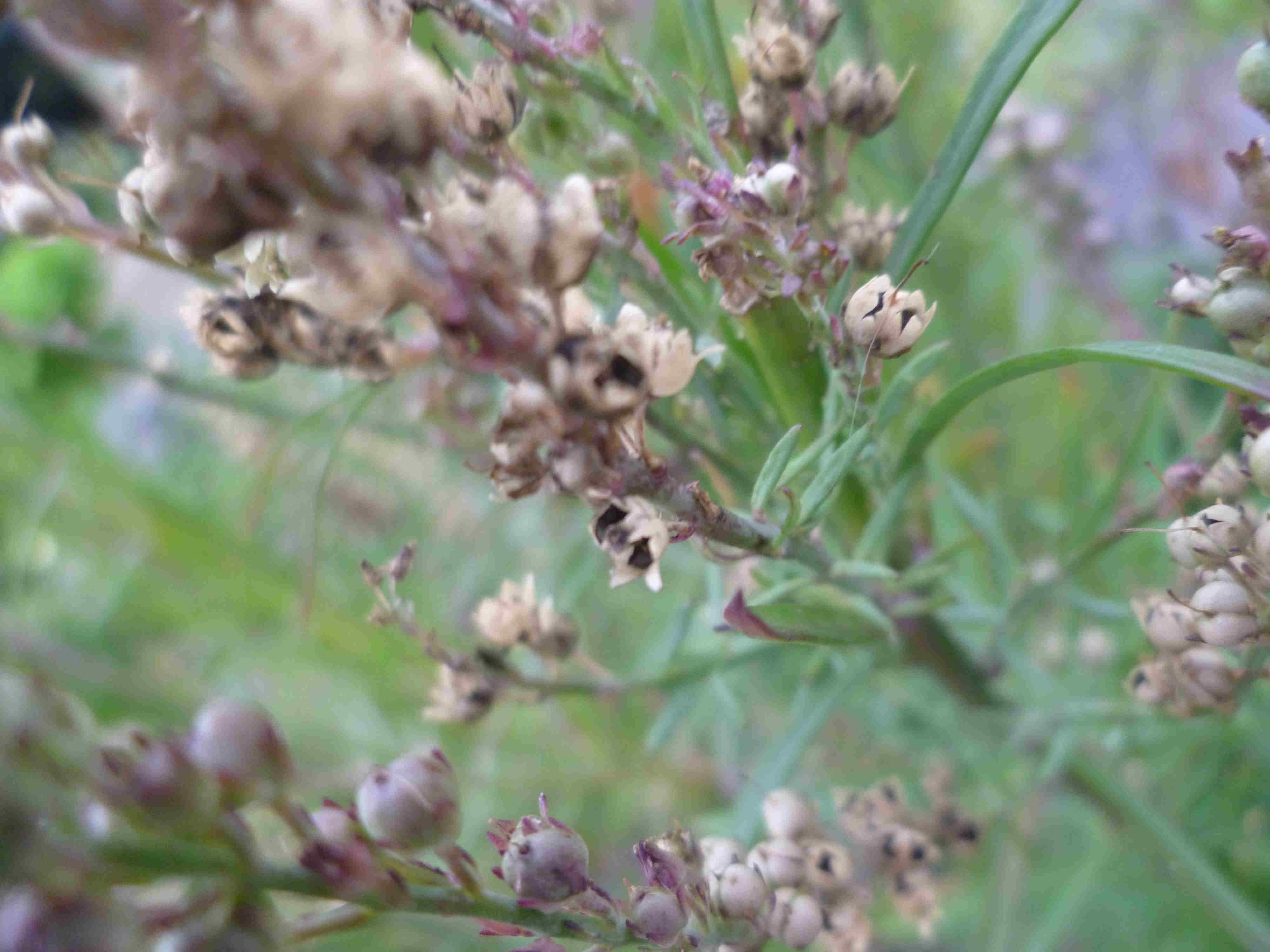
toadflax seeds
Where I deadheaded them earlier this year, there are hollow stems – whole tower blocks where insects could be curling up ready for the winter …
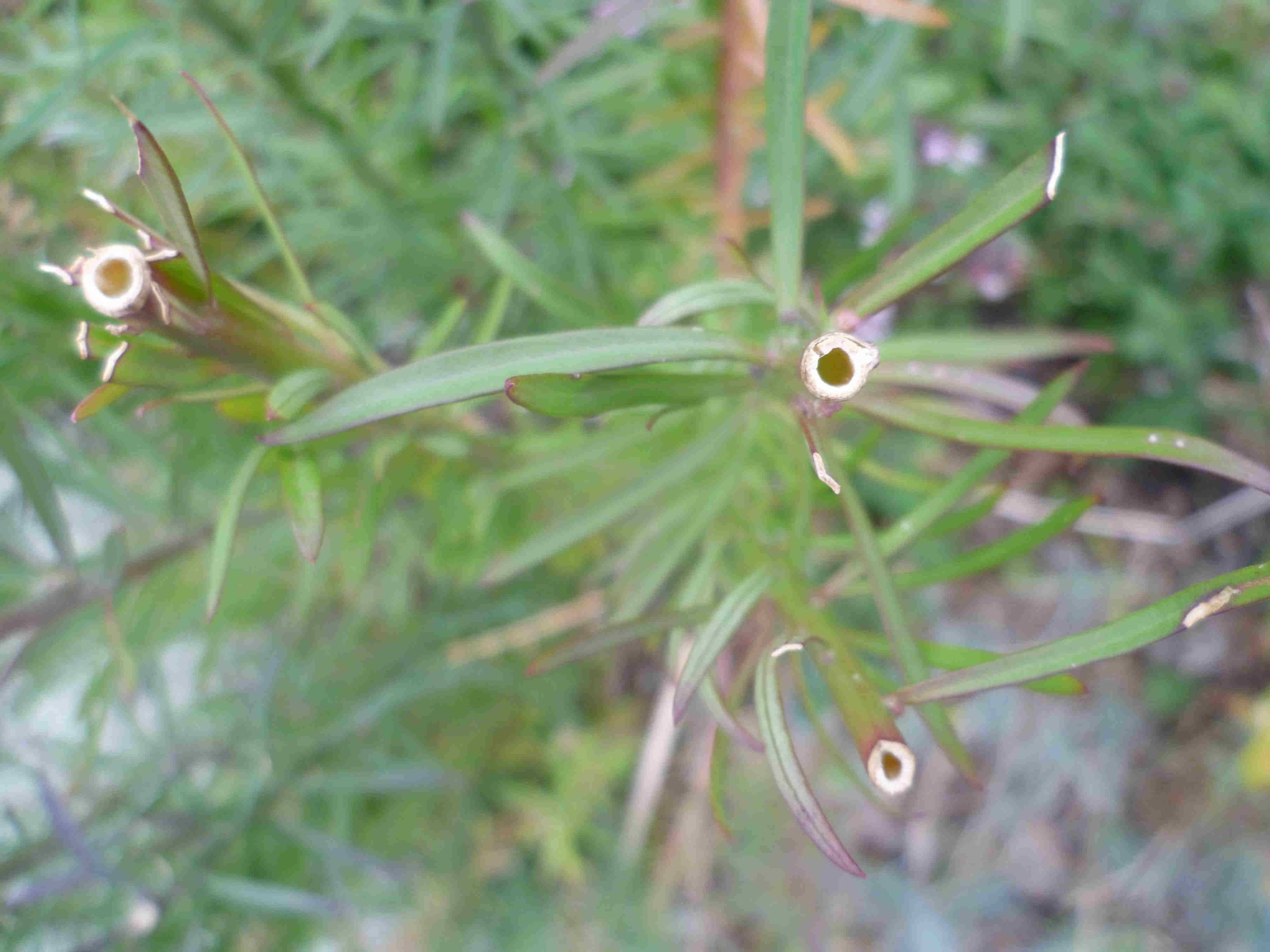
hollow toadflax stems
The ‘lambs lettuce’ path below is full of bits of grass, self sown cranesbill, and strawberry plants that walked out of their pots …

lambs lettuce path
I once tried to tidy up under this hedge, pulling up the grass and intending to put bark mulch underneath. I hadn’t got very far before I noticed a movement. On closer inspection, I saw a tiny newt which had been taking full advantage of the warm cover that the ‘mess’ of dried grass provided. I picked it up to check that I hadn’t injured it, feeling pretty rotten that I’d disturbed it. It sat, blinking, on my hand. I gave up the idea of tidying, and tucked the little creature back under the hedge.
One permaculture principle is to ‘use edges and value the marginal‘:
“don’t think you are on the right track just because its a well-beaten path”
My untidy path is not a well-beaten one, but this edgy ‘mess’ will be a haven for wildlife through the winter. I can still step on it to get at the lambs lettuce for winter salads. I’ll just need to give any lurking residents a bit of warning first.
A simple permaculture principle is to ‘obtain a yield’. I think of this in terms of providing food or shelter for other species, as well as ourselves. Bearing this in mind, I had long been frustrated with the border of hydrangeas which we inherited when we bought the house. Whilst they do flower in shade (and our back garden is indeed shady), the flowers don’t seem to attract any pollinator activity, and the shrubs are not dense enough for birds to nest in. The border was also rather uninteresting to look at:
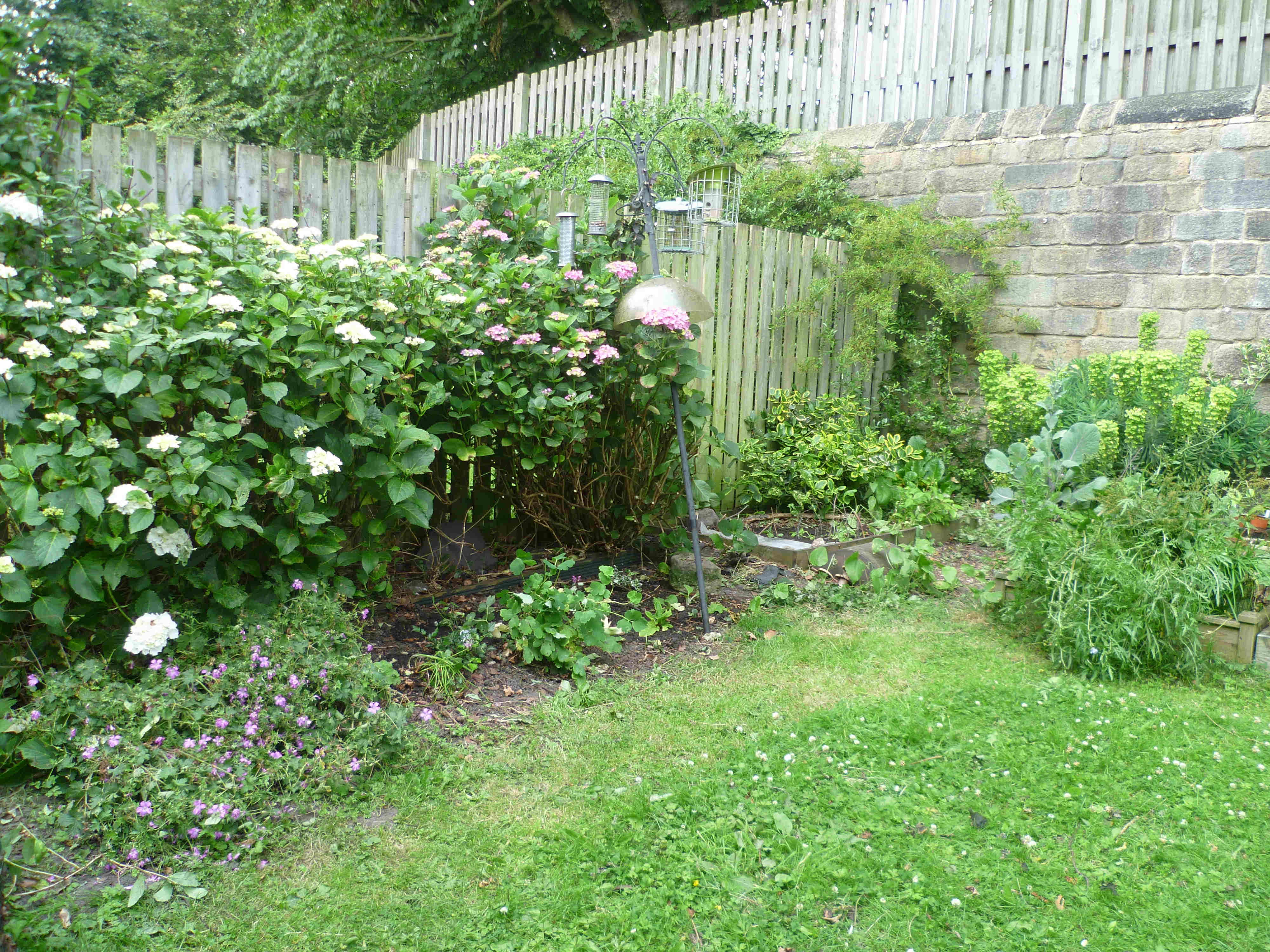
Hydrangea border, July 17
Meanwhile, I have had a constant struggle with safely storing seedlings as I try to establish new perennial edible plants from seed. Slugs are tremendously agile and versatile, and are experts at finding young seedlings – whether you put them ‘up high’ or not. The only thing that worked was to put seedlings on a table with its feet in water. Other solutions, such as shelving, ended in tears as the shelves invariably blew over in the strong gales which we are now prone to. What I really needed was a greenhouse; a safe space for my seedlings and a place to grow winter salads. With any luck, we might get tomatoes to ripen in there as well, as our season in the North West of the UK is short.
We had a battered collection of shade-loving shrubs in the back corner of the garden, which is the lightest corner available for a greenhouse:
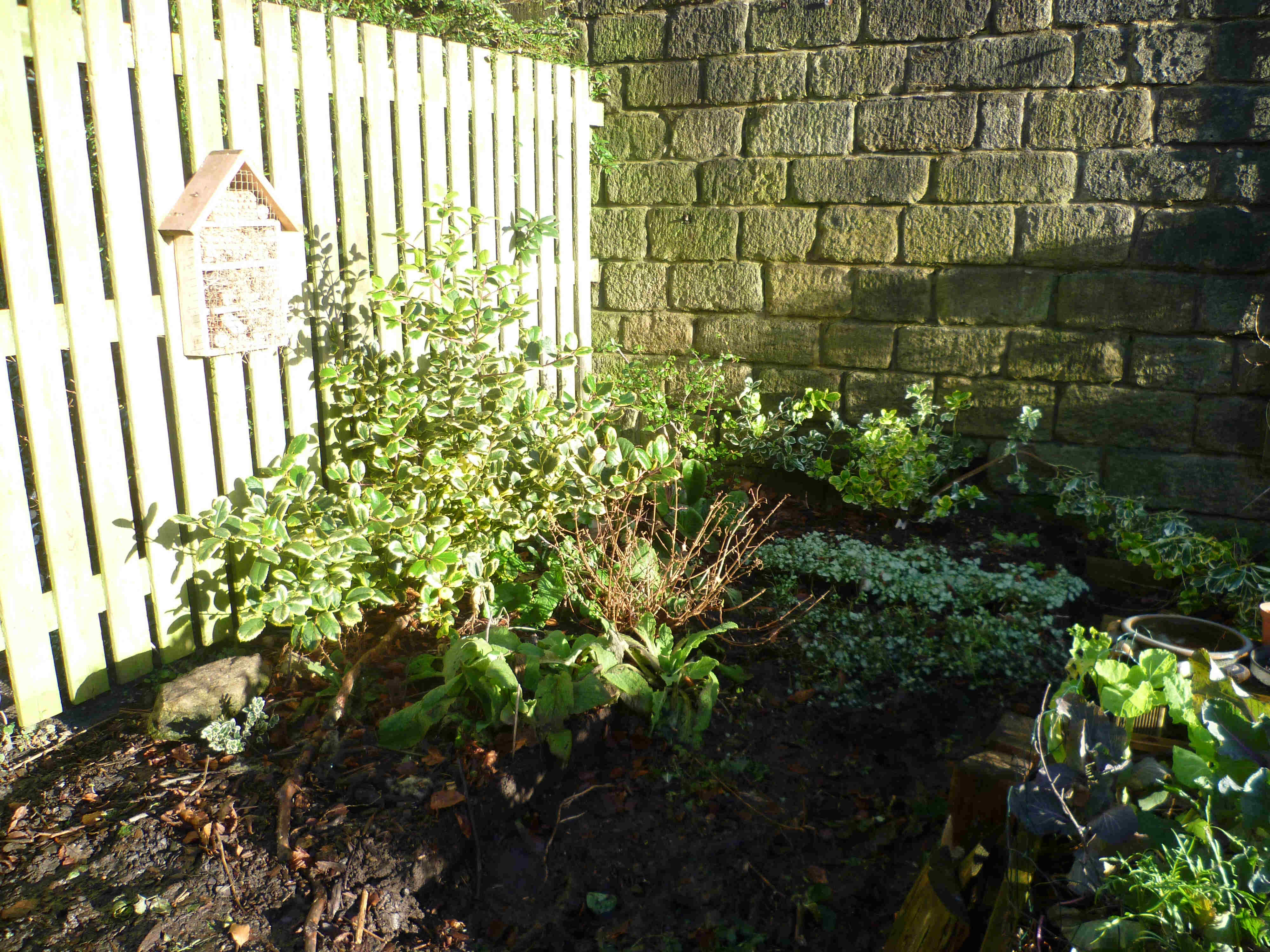
Shade loving shrubs in sunny place, January 2018
So we had a rethink about the space. This decision was a difficult one, as I prefer to leave things alone. However, I had a whole border of unproductive space, and an opportunity to redesign it with a range of more productive and visually interesting plants, providing nectar and berries for wildlife, and prickly habitat for birds. So in January this year, we took out the hydrangeas, chopped them up, and used the woody material to beef up the ‘path’ at the back (I will write more about this later). We (the royal ‘we’; my husband did the digging) moved the shrubs to the hydrangea border:
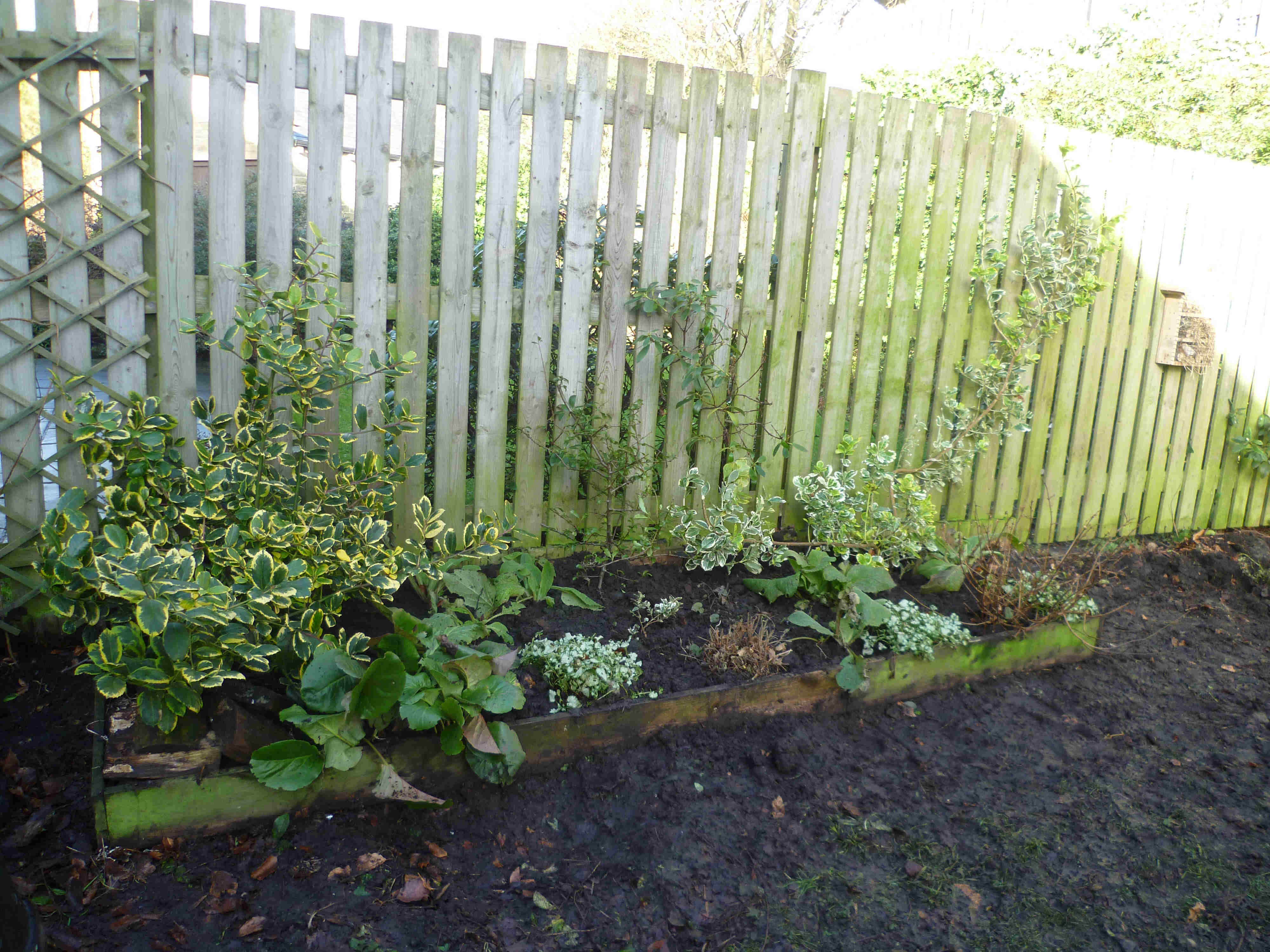
Shade loving shrubs moved to new location, January 2018
In its place, we planned to put a greenhouse. The decision to do this was, in itself, full of contradictions, as I will explain in my next post.
We had a couple of sunny Autumn days lately, and I determined to get out into the garden. The profusion of spent borage, exuberant pot marjoram and ancient alchemilla were bugging me. It needs tidying up, I decided. So out I went, secateurs in hand.
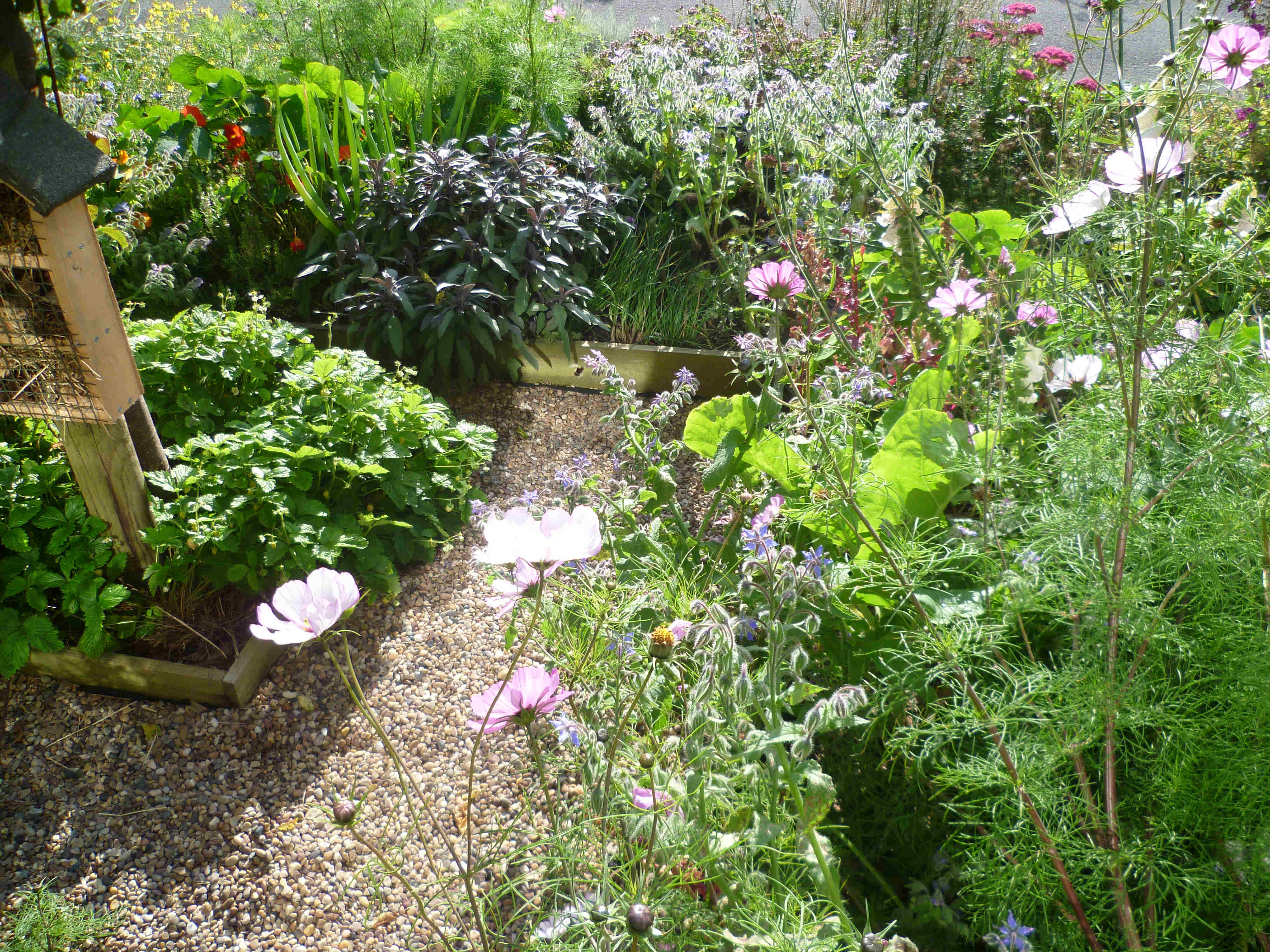
The garden greeted me with a sunny smile and a happy hum of activity. I was distracted by this:
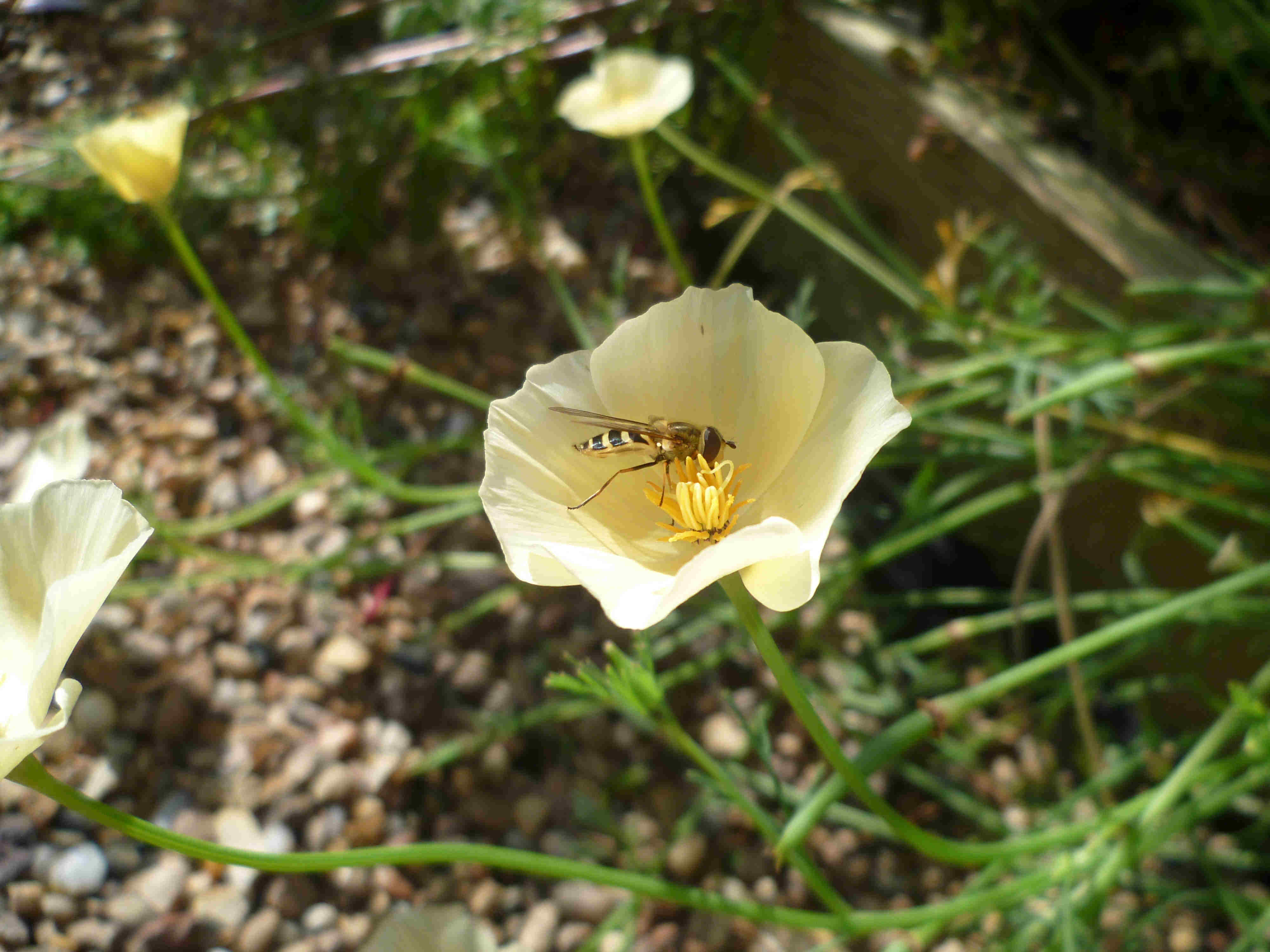
and this …
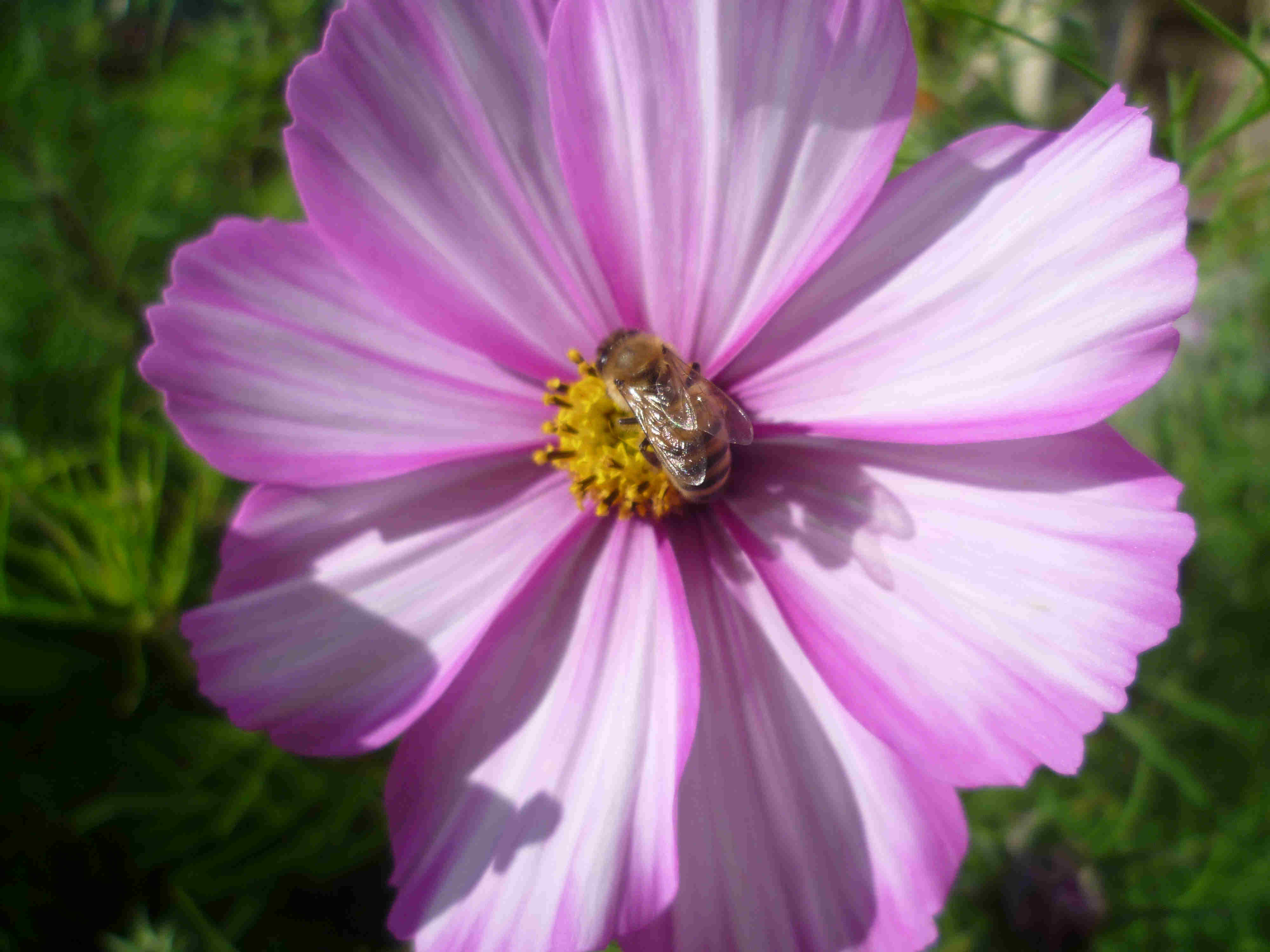
The bumble bees were rattling around noisily inside the late foxgloves. OK, I thought, so the beds can’t be tidied up yet. I proceeded to the front border, determined to cut down the alchemilla before it seeded itself everywhere. I was stopped in my tracks by this:
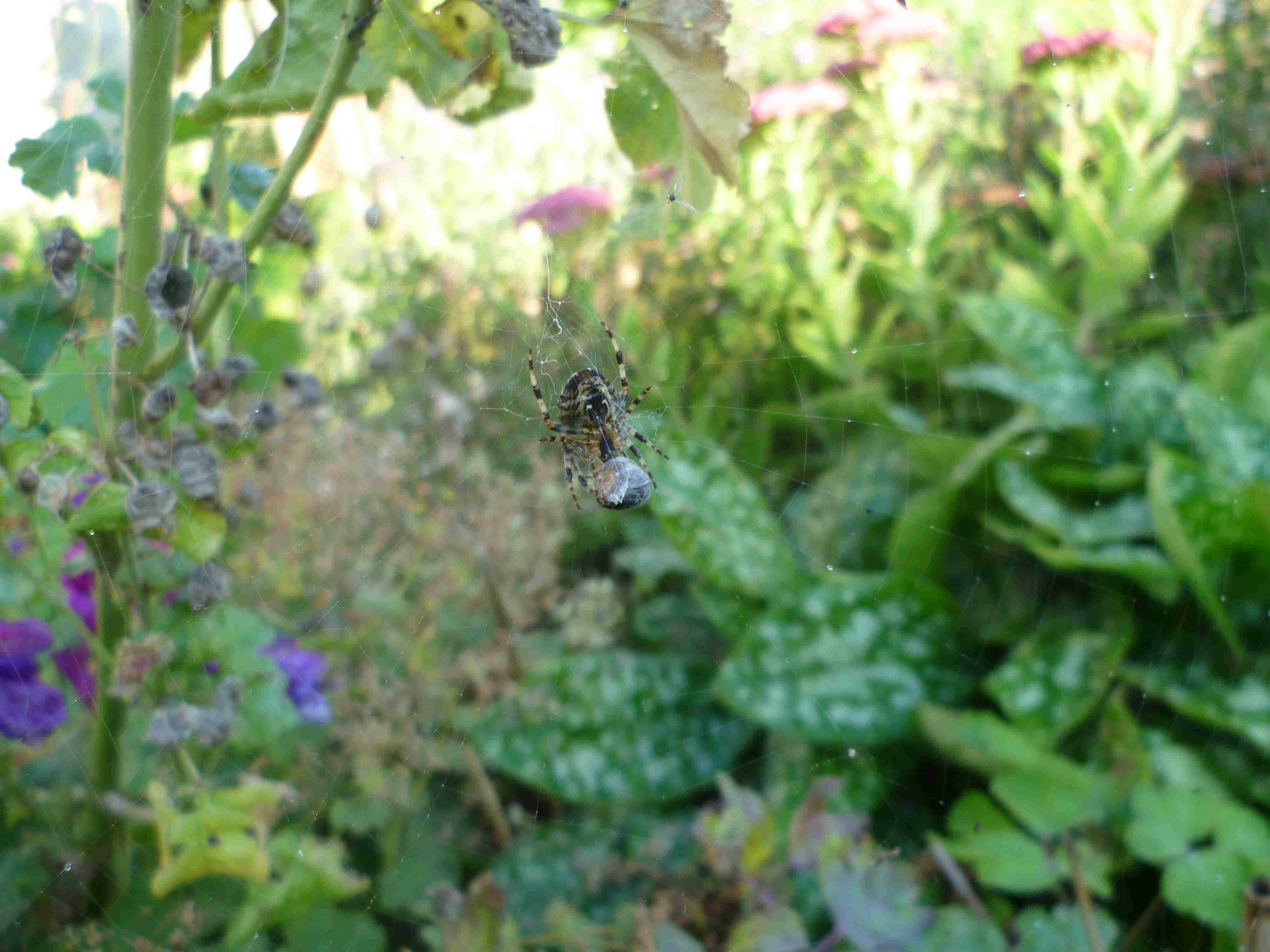
A garden spider preserving something for her larder by wrapping it in silk. Her web was strung across the alchemilla. Naturally I couldn’t disturb her. Next to her was one of my favourite insects, the dapper shield bug:
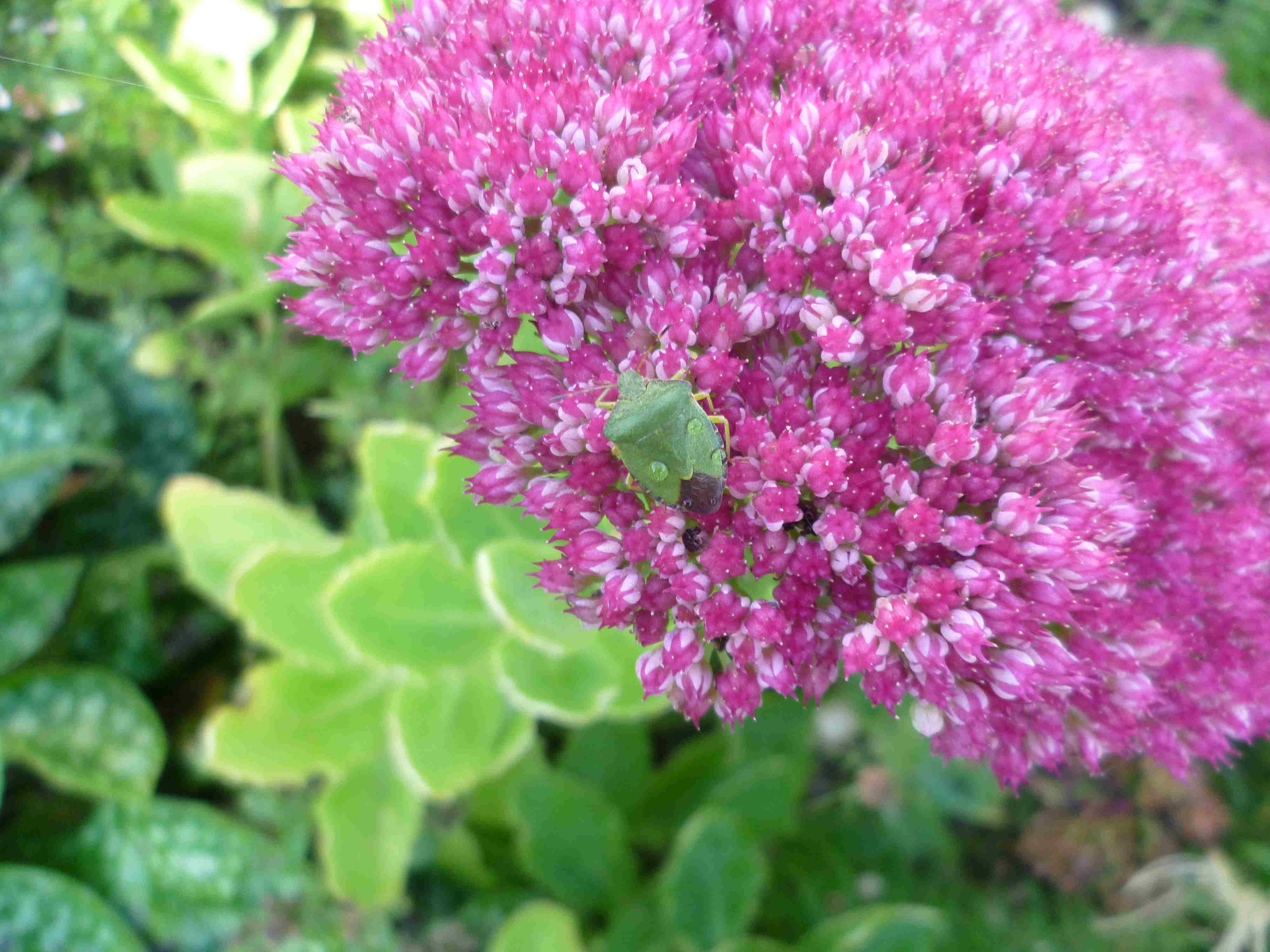
Clearly leaving the front border alone for a while had enabled the insects to move in and organise the infrastructure that they require. It would be rude to interrupt. So – that left the borage. Surely I could tidy up the borage by now?

Bug*** off! said the bees. I want those last flowers. So I gave in. I am slowly redefining ‘gardening’ as being with the garden, rather than interfering with it. And it rewards me.
